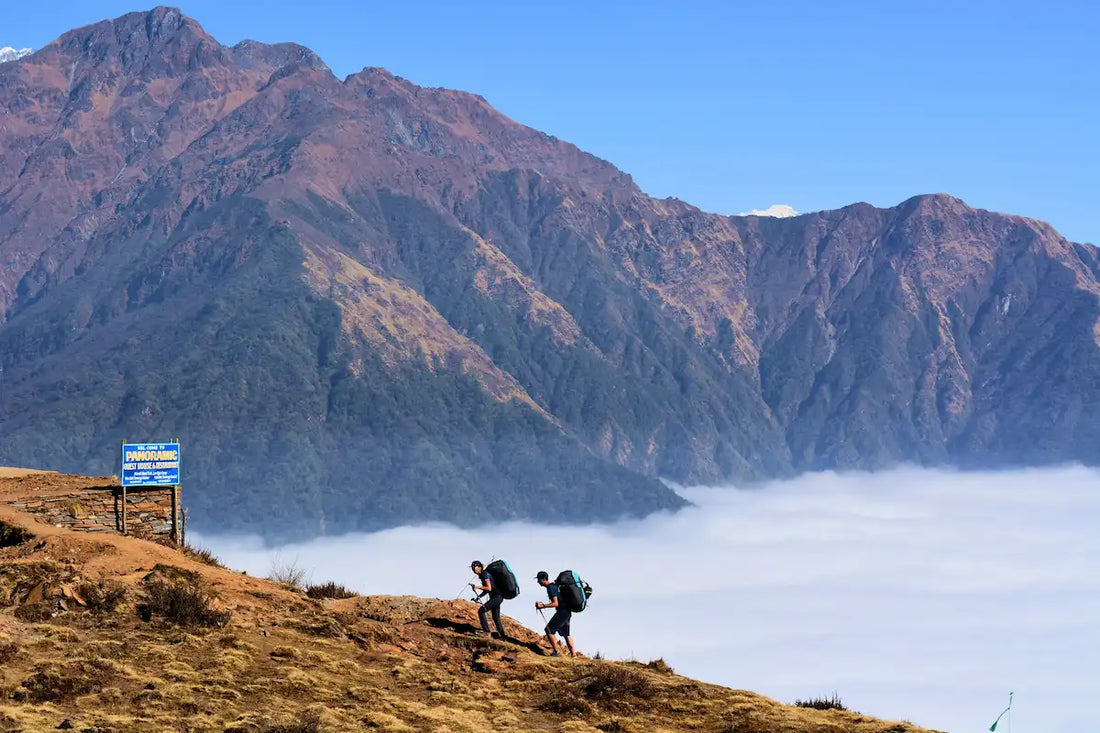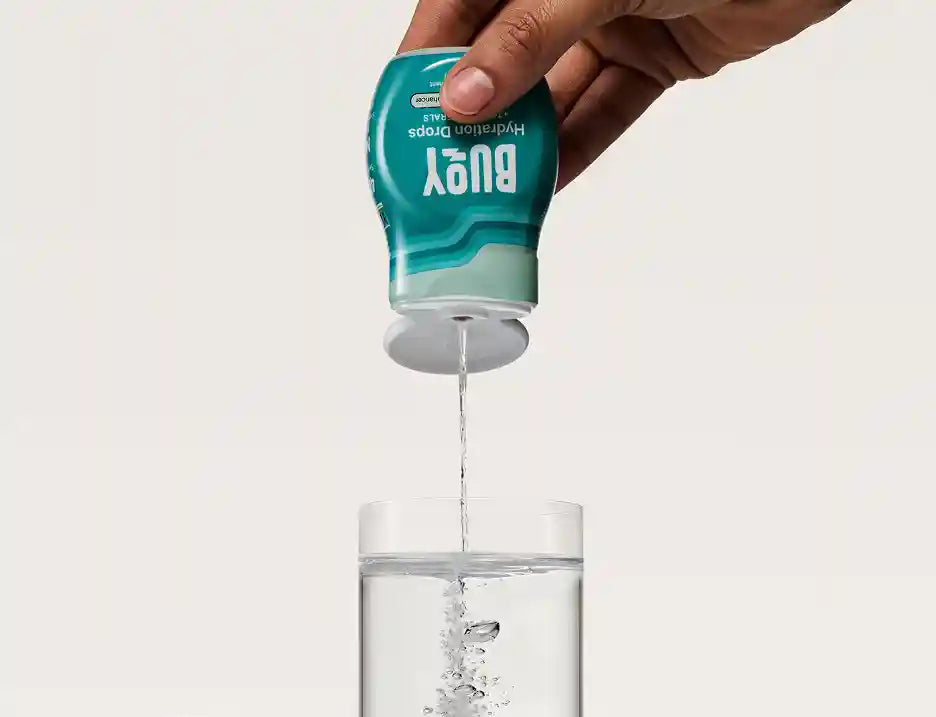
Hydrate to Alleviate: Altitude Sickness Treatments
Share
High-altitude adventures offer awe-inspiring views, fresh air, and a sense of accomplishment. However, the exhilarating highs can come with a downside—altitude sickness.
Altitude sickness is a common but often misunderstood condition. Embarking on an adventure in the mountains or places far above sea level might be a dream for many, but it also presents the possibility of developing this potentially life-threatening illness.
Characterized by symptoms like headache, dizziness, and nausea, altitude sickness can quickly put a damper on any expedition (1). But what exactly causes this condition, and how can it be treated or prevented? The key may lie in something as simple, yet critical, as hydration.
Essential Takeaways
- Altitude sickness arises when the body struggles to adapt to reduced oxygen levels at high altitudes. Symptoms can range from mild, like headaches and dizziness, to severe cases that demand immediate attention. The best approach is understanding its causes and knowing how to respond effectively.
- With altitude sickness, prevention and treatment go hand in hand. Buoy’s Hydrating Wellness Drops provide an effective solution for both. Buoy drops replenish your body's water balance and provide essential electrolytes and vitamins, making them an ideal companion for high-altitude adventures. Stay safe, stay hydrated with Buoy!
Let’s dive into this comprehensive guide that will help you understand altitude sickness and how optimal hydration plays a pivotal role in its prevention and treatment.
- Understanding Altitude Sickness: Causes and Symptoms
- The Importance of Hydration in Altitude Sickness Treatment
- Buoy Hydration Drops: How They Work
- Other Altitude Sickness Treatments
- Prevention Tips for Altitude Sickness
Understanding Altitude Sickness: Causes and Symptoms
Altitude sickness, commonly known as Acute Mountain Sickness (AMS), occurs primarily due to sudden exposure to reduced oxygen levels at high elevations. As you ascend, the air becomes thinner, resulting in less oxygen available to breathe.
Typically, concerns about altitude sickness begin at elevations of 2,500 meters (8,200 feet) and above, with risks increasing significantly as you go higher (1).
When the body struggles to adapt to the decrease in oxygen, bodily functions can be disrupted, leading to symptoms like headache, nausea, fatigue, and shortness of breath. This potentially dangerous condition can affect anyone, regardless of their physical fitness or training.
It's important to note that while altitude sickness commonly starts to manifest above 2,500 meters, the severity and onset can vary based on individual susceptibility, rate of ascent, and other factors (2).
Common Causes of Altitude Sickness
When ascending rapidly to great heights, the body compensates by increasing its respiratory and heart rates to deliver more oxygen to tissues. Sometimes, however, this rapid adaptation is insufficient, resulting in symptoms of altitude sickness.
It’s important to quickly recognize these signs, including dizziness, headache, nausea, and loss of appetite. Addressing them promptly can prevent further complications (2).
Symptoms of Altitude Sickness
Recognizing the symptoms of altitude sickness is the first step toward proper management and treatment. The symptoms, ranging from mild to severe, are the body's way of indicating that it's struggling with the altitude:
- Persistent Headaches: Unlike regular headaches, these may not be relieved with standard over-the-counter remedies.
- Nausea and Vomiting: It's not uncommon for nausea to be accompanied by vomiting.
- Dizziness or Lightheadedness: This can make standing or walking difficult.
- Sleep Disturbances: Many experience difficulty sleeping or even insomnia.
- Exhaustion: An overwhelming sense of fatigue or a sudden loss of energy can be evident.
- Breathing Challenges: Shortness of breath or difficulty breathing, especially during physical exertion.
It's essential to recognize these symptoms early on. If they persist or intensify, immediately descend to a lower altitude and get medical intervention. Altitude sickness can worsen quickly, so it’s important to always prioritize safety (2).
For a deeper dive into the duration and progression of altitude sickness, explore our blog post How Long Does Altitude Sickness Last?
The Importance of Hydration in Altitude Sickness Treatment
Hydration is your body’s secret weapon against altitude sickness. The process is quite straightforward: when you’re well-hydrated, your blood is better oxygenated, promoting improved circulation.
This ensures that your body's organs receive the necessary oxygen they need, even in environments where it’s in shorter supply (3).
Benefits of Staying Hydrated
While many associate hydration simply with quenching thirst, its significance in our body's overall function is profound. At elevated altitudes, where the environment poses unique challenges, the role of water and effective hydration becomes even more crucial.
Let's explore how staying hydrated can be a game-changer when acclimatizing to high altitudes:
- Increased Oxygen Flow: Proper hydration means improved blood flow, which can help your body better utilize available oxygen.
- Reduced Symptoms: Drinking water can alleviate symptoms like headaches and dizziness, often experienced due to dehydration at high altitudes.
- Toxin Elimination: Proper hydration aids the kidneys in flushing out toxins, which can be particularly beneficial when combating altitude sickness.
At higher altitudes, the body loses fluids at a quicker pace, making dehydration a leading cause contributing to altitude sickness. However, simply drinking water might not be enough (1).
Water, especially processed or bottled, often lacks the vital electrolytes the body craves during high-altitude exertion (4). This is where effective hydration solutions come into play.
For guidance on effective hydration strategies, check out How to Hydrate Quickly and Effectively.
The Dangers of Dehydration
Altitude sickness is often exacerbated by dehydration. High altitudes can lead to faster evaporation of moisture from our lungs and increased urination, both of which can dehydrate us rapidly. The symptoms of dehydration can mimic or exacerbate those of altitude sickness, including headache, fatigue, and dizziness.
Moreover, dehydration reduces the body's ability to transport oxygen through the blood, a capability already compromised by the decreased oxygen levels at high altitudes. It's a double whammy that can be dangerous (1).
For an in-depth look at the impact of prolonged dehydration, see Chronic Dehydration Symptoms.
Buoy Hydration Drops: The Ultimate Hydration Solution
Dehydration isn’t just a shortage of water—it’s also an imbalance of essential electrolytes (5). Buoy’s purposely unflavored hydration drops provide a concentrated source of these necessary electrolytes.
Designed for adventurers and health enthusiasts alike, Buoy’s drops easily integrate into any drink, ensuring that you stay hydrated, energized, and healthy—even at high altitudes.
Buoy Hydration Drops: How They Work
Ensuring optimal hydration is crucial when venturing to high altitudes. While drinking enough water is the first step, it's equally important to maximize the hydration potential of the water you consume. This is where Buoy Hydration Drops stand out.
Buoy is a Unique Hydration Solution
Unlike many other products on the market which are typically flavored, Buoy offers a unique solution with its flavorless drops, reflecting their dedication to diverse customer preferences.
Designed to provide a concentrated dose of essential electrolytes, they can be seamlessly added to any drink, making them an easy and effective way to hydrate throughout your day.
Key Ingredients and Benefits:
- Essential Electrolytes: They balance the fluids in and out of your cells, muscles, and organs. This is particularly beneficial for people managing chronic illnesses, where dehydration can intensify symptoms.
- Vitamins: These support overall wellness and ensure you receive necessary nutrients, especially at higher altitudes.
- Antioxidants: Combat oxidative stress, which may increase at high altitudes. This contributes to cellular health in challenging environments.
By adding Buoy to your hydration routine, you're equipping your body with the tools it needs to combat the symptoms of altitude sickness more effectively.
Using Buoy not only aids in combating the symptoms of altitude sickness but also supports overall health, especially in situations where diet and water might not suffice.
Learn More About Buoy Hydration Drops
How to Optimize the Use of Buoy's Hydration Drops
Before your high-altitude adventures, begin by integrating a squeeze of Buoy into your drinks. This pre-hydrates your body, setting a foundation for the climb.
Continue this practice at high altitudes, adding drops to water, tea, coffee, alcohol, or even soup. After your adventure, continue using Buoy to aid recovery and make up for any lost electrolytes.
Remember, your individual needs can vary based on factors like activity levels and diet, so always be attentive to your body's signals and adjust accordingly.
When you're preparing for high-elevation activities, maintaining optimal hydration and electrolyte balance is key. While water remains essential, it doesn't always offer enough electrolytes. This is where Buoy steps in, filling that gap and ensuring your body is well-equipped to prevent altitude sickness.
Planning an adventure? Equip yourself with Buoy to ensure you're at your best. Stay safe, remain hydrated, and let Buoy help you achieve those breathtaking summits.
Other Altitude Sickness Treatments
While maintaining optimal hydration stands as a primary defense against altitude sickness, it's essential to understand the array of treatments available to combat this condition:
- Medications: Over-the-counter painkillers can help manage headache symptoms. Prescription medicines like acetazolamide can also be used to prevent and reduce the severity of symptoms.
- Oxygen Supplementation: For those experiencing acute symptoms, using supplemental oxygen can be a lifeline, helping to normalize oxygen levels in the bloodstream.
- Immediate Descent: In situations where symptoms rapidly intensify, descending to a lower altitude can be the most direct and effective remedy.
While these treatments offer various avenues to manage and mitigate the effects of altitude sickness, it's crucial to tailor one's approach based on individual needs and the severity of symptoms (2).
Always consult with a healthcare professional when considering medication or oxygen supplementation. And remember, in high-altitude adventures, prevention is often the best medicine.
The Role of Electrolytes
Hydration is about more than drinking enough water. Essential minerals or electrolytes play a vital role in maintaining our body's fluid balance and muscle function. Four primary electrolytes are essential for these functions:
- Sodium and Potassium: These work in tandem to balance fluid levels in and out of cells. They help transmit electrical impulses that influence heart rhythms and muscle contractions
- Calcium: Beyond its role in bones and teeth, calcium aids in muscle contraction and the release of neurotransmitters.
- Magnesium: This helps with muscle contractions, nerve function, enzyme activation, and balancing calcium in the body (5).
At higher altitudes, factors like rapid breathing and increased urination can deplete these essential electrolytes. The lower oxygen levels make the body work harder, leading to faster exhaustion of these minerals (2). That's why, hydrating with water and replenishing electrolytes is so important at high altitudes.
Learn more about the role of electrolytes in hydration and overall wellness: What Are Electrolytes Good For?
Prevention Tips for Altitude Sickness
Prevention is always better than cure. When preparing for high-altitude excursions, consider the following preventative measures:
- Gradual Acclimation: If traveling to a high-altitude destination, try to break up the ascent by spending a few days at a midway point to allow your body to adapt.
- Stay Hydrated: Regularly consume water and bolster its effectiveness with hydration enhancers. Products like Buoy hydration drops can amplify your hydration efforts, making each sip count.
- Minimize Alcohol Consumption: Alcohol can increase the risk of dehydration and exacerbate altitude sickness symptoms. By avoiding it, you reduce the risk of exacerbating symptoms of altitude sickness.
- Limit Physical Exertion: Your body needs time to adapt to high altitudes. Until you've adjusted, avoid strenuous activities.
By being proactive and keeping these preventative tips in mind, you can significantly reduce the risks associated with altitude sickness. It's essential to prioritize your health and well-being during high-altitude adventures.
Listen to your body, take necessary precautions, and always seek medical advice if you're unsure about your symptoms or how best to prepare (2).
Tips on Recognizing Early Symptoms
Altitude sickness can manifest in subtle ways before escalating. Spotting these early indicators can be the difference between a memorable adventure and a distressing experience:
- Be Self-Aware: Tune in to your body's signals. Distinguish between the usual tiredness from trekking and more alarming signs like unyielding headaches or nausea.
- Monitor Breathing: An unusual quickening of breath or difficulty in breathing can signal the onset of altitude sickness.
- Look for Swelling: Puffiness or swelling in the hands, feet, or face should raise an alert.
- Stay in Touch: Always keep your travel companions informed about how you're feeling. They might notice symptoms in you that you've missed, and vice versa.
Catching these symptoms early and responding promptly—including descending and rehydrating—can prevent more serious complications (2).
Thanks to innovations like Buoy Hydration Drops, adventurers now have a straightforward and potent tool to address dehydration and electrolyte imbalances. So, before ascending to those mesmerizing heights, make a mantra: Hydrate to Alleviate.
For an in-depth exploration of this topic, refer to our piece on How to Prevent Altitude Sickness.
Stay safe, stay hydrated, and enjoy the breathtaking beauty that high altitudes have to offer!
Conclusion
Altitude sickness might seem scary, but it’s pretty manageable with the right precautions. Adding Buoy’s Hydrating Wellness Drops to your regimen before, during, and after your trip does more than merely address the symptoms. It’s a proactive step toward enriching your high-altitude experiences.
Explore Buoy’s range of wellness drops to ensure you’re adequately prepared for your next adventure. And remember, always prioritize hydration, limit your physical exertion, and give your body the time it needs to adjust to new heights.
Ready for your next high-altitude adventure? Don't leave without Buoy’s Hydrating Wellness Drops. Stock up now!
References:
- Luks, A. M., Swenson, E. R., & Bärtsch, P. (2017). Acute High-Altitude Sickness. European Respiratory Review, 26(143), 160096. Retrieved from https://doi.org/10.1183/16000617.0096-2016
- Curtis, R. (1999). Altitude Illness: Prevention & Treatment. Outdoor Action Program, Princeton University. Retrieved from http://www.princeton.edu/~oa/safety/altitude.html
- Montain, S. J., Cheuvront, S. N., & Sawka, M. N. (2000). Fluid and Electrolyte Supplementation for Exercise Heat Stress. American Journal of Clinical Nutrition. Retrieved from https://pubmed.ncbi.nlm.nih.gov/10919961/
- Azoulay, A., Garzon, P., & Eisenberg, M.J. (2001). Comparison of the Mineral Content of Tap Water and Bottled Waters. Journal of General Internal Medicine, 16(3), 168-175. doi: 10.1111/j.1525-1497.2001.04189.x. Retrieved from https://www.ncbi.nlm.nih.gov/pmc/articles/PMC1495189/
- Healthline. (2019). Electrolytes: Functions, Imbalance, and Sources. Retrieved from https://www.healthline.com/nutrition/electrolytes








